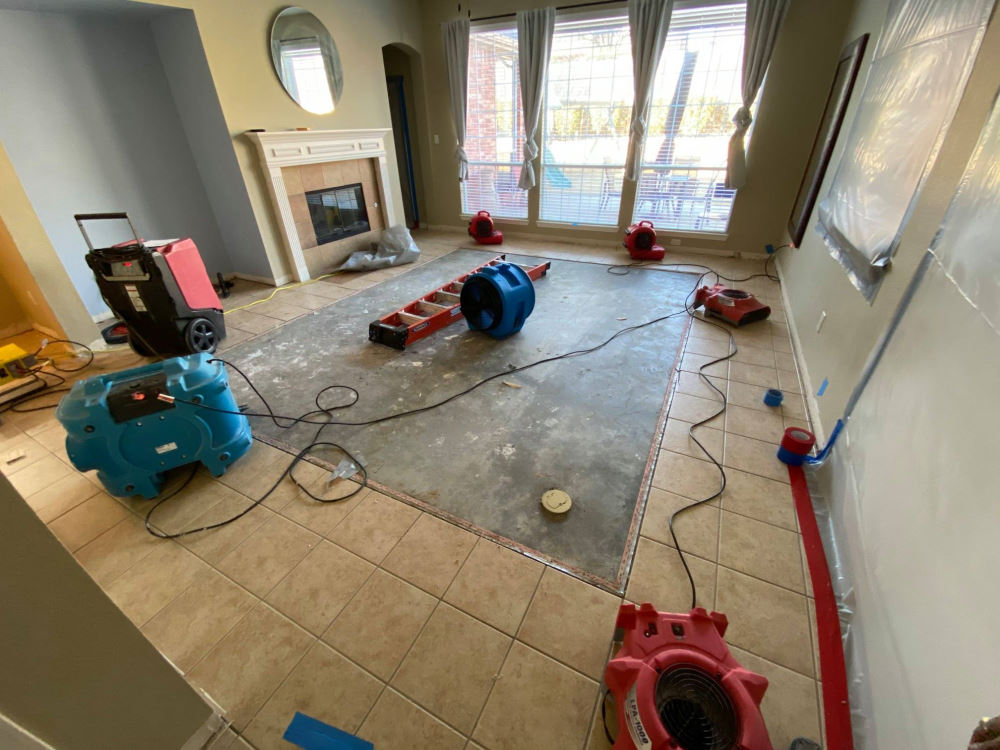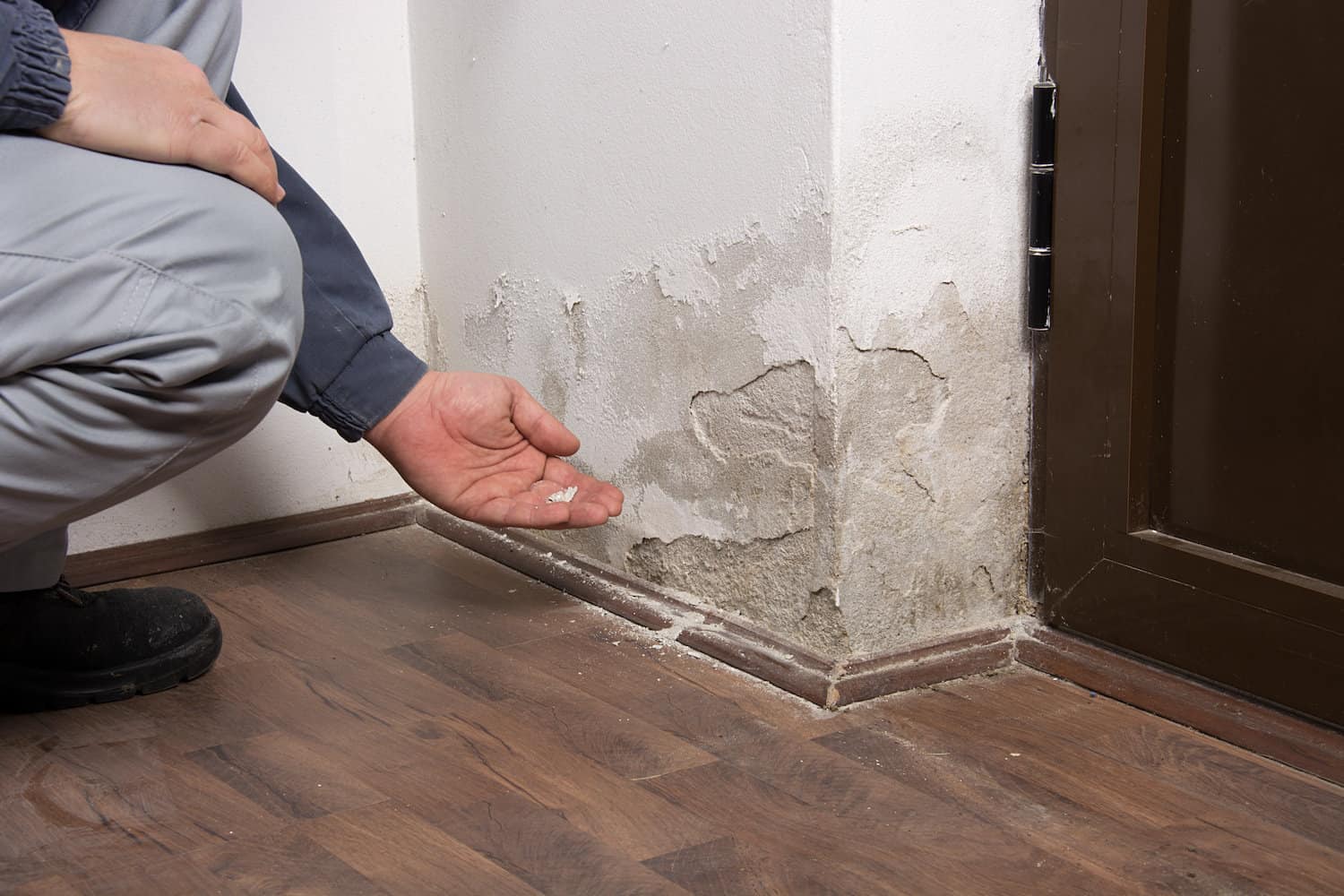Water Damage Cleanup Experts Offering Prompt and Efficient Solutions
Wiki Article
The Process of Water Damages Clean-up: Guaranteeing Your Home Is Recovered Successfully
Water damages can be an overwhelming obstacle for house owners, requiring a organized and meticulous cleaning procedure to bring back safety and performance. At first, a comprehensive assessment is vital to recognize the extent of the damages and identify the appropriate removal procedures. Following this, effective water removal strategies play a critical duty in alleviating further injury. The nuances of drying out, disinfecting, and ultimate reconstruction are equally crucial and frequently ignored. Recognizing these stages can make a substantial distinction in the end result of your home's remediation, triggering a closer check out what each step requires.Assessing the Damages
Upon uncovering water damage, the very first step is to extensively analyze the degree of the influence. This preliminary examination is important, as it aids identify the necessary steps for reliable cleanup and reconstruction. Begin by evaluating the impacted locations, including wall surfaces, ceilings, floors, and individual belongings, to recognize the source of the water invasion, whether from flooding, leaks, or condensation.Documenting the damage is essential for both insurance policy cases and preparing restoration initiatives - damage restoration services. Use photos and composed notes to capture the extent of the damage, keeping in mind any type of afflicted structural components and materials. Pay special interest to areas that may not be instantly noticeable, such as behind wall surfaces and under carpets, as concealed dampness can lead to further problems, including mold and mildew growth
In addition, analyze the timeline of the water exposure. The longer the products stay wet, the greater the capacity for damages. Comprehending the duration of exposure will certainly educate the necessity of remediation efforts. Eventually, a detailed analysis lays the foundation for a successful water damage cleanup process, making certain that all affected locations are addressed successfully and completely.
Water Extraction Techniques

Specialists commonly use completely submersible pumps for bigger volumes of water, which can swiftly relieve flooding in cellars or various other affected areas. For smaller quantities, wet/dry vacuums are frequently used to draw out recurring moisture from carpets and difficult surfaces. Furthermore, using mobile extractors permits targeted elimination in confined areas or locations with fragile materials.
In circumstances of polluted water, such as sewage or floodwater, progressed removal methods may include using biohazard equipment to ensure safety and security and compliance with wellness policies. High-powered removal devices are crucial in reducing water retention in architectural materials, which can bring about mold development and architectural damage otherwise dealt with quickly.
Ultimately, the effectiveness of water removal techniques plays a pivotal role in the total success of the water damage cleaning process, preparing for subsequent repair efforts.
Drying and Dehumidification
Once standing water has been successfully extracted, the next essential phase in the water damage cleaning procedure is drying out and dehumidification. This action is vital to avoid additional damages and mold growth, which can happen within 24 to 48 hours in damp environments.To accomplish effective drying, customized equipment such as industrial-grade air movers and dehumidifiers is employed. Air movers distribute air across damp surface areas, improving dissipation rates, while dehumidifiers decrease moisture levels airborne, promoting a conducive environment for drying out. The mix of these tools ensures that dampness is extracted from home furnishings, wall surfaces, and floors, enabling them to dry completely.
It is very important to check the drying procedure very closely. Professionals frequently make use of wetness meters to evaluate the moisture content in different products, guaranteeing that all impacted areas reach appropriate dry skin levels. This careful approach aids to stop hidden wetness pockets that could cause structural damage or harmful mold and mildew development.

Cleansing and Sanitizing
After the drying out and dehumidification phase is total, the next essential step in water damage cleaning is cleaning and sanitizing the affected locations. This process is vital to avoid the growth of mold, microorganisms, and various other pathogens that grow in damp environments.The cleaning stage commonly entails eliminating any kind of debris, dirt, and pollutants from surface areas using specialized cleaning up agents. For difficult surface areas, a combination of soap and water or business cleansing products is usually utilized. Soft products, such as furniture and carpetings, might require much more comprehensive cleaning techniques, consisting of steam cleansing or deep removal strategies, to guarantee comprehensive sanitation.

Disinfecting follows cleaning, making use of EPA-approved disinfectants to remove hazardous microbes. This action is vital, especially in locations that might water damage have entered into call with floodwaters or sewage, as these resources can pose severe health dangers.
Additionally, it is very important to address any type of remaining smells, which might need the usage of smell neutralizers or advanced methods like ozone therapy. Correct cleaning and disinfecting not just restore the security and hygiene of your home but likewise prepared for successful reconstruction and repair work in subsequent phases of the water damages cleanup procedure.
Remediation and Repair Work

When the analysis is full, restoration efforts can begin. This typically entails fixing or changing broken products, guaranteeing that all job abides by local building codes and criteria. For circumstances, if drywall has actually been endangered, it will need to be eliminated and replaced with brand-new product. Furthermore, floor covering may call for similar focus, depending upon the degree of water direct exposure.
It is crucial to involve seasoned restoration specialists during this process, as they possess the know-how to manage complicated repair work efficiently. They can aid minimize prospective future problems, such as mold and mildew development or architectural instability, thus guaranteeing a habitable and safe living setting. Inevitably, efficient remediation and repair work recover the home's integrity and enhance its general value.
Final Thought
Finally, the process of water damages clean-up is vital for bring back a home to its pre-damage condition. Each stage, from evaluating the damage to carrying out effective water extraction techniques, followed by detailed drying out, sterilizing, and essential fixings, plays an important function in guaranteeing security and compliance with structure requirements. Effective implementation of these actions not only minimizes prompt damages yet additionally enhances the long-lasting stability and value of the residential or commercial property.Water damage can be an overwhelming difficulty for homeowners, necessitating a thorough and organized cleaning process to restore security and performance. Ultimately, an extensive assessment lays the groundwork for a successful water damages cleanup procedure, ensuring that all impacted areas are resolved properly and completely.
Efficient water extraction strategies are necessary in mitigating damages and preventing additional problems adhering to a water breach occasion.In verdict, the process of water damage clean-up is crucial for recovering a home to its pre-damage condition. Each stage, from analyzing the damages to implementing effective water removal techniques, complied with by detailed drying out, sterilizing, and necessary fixings, plays a necessary function in guaranteeing security and compliance with building criteria.
Report this wiki page